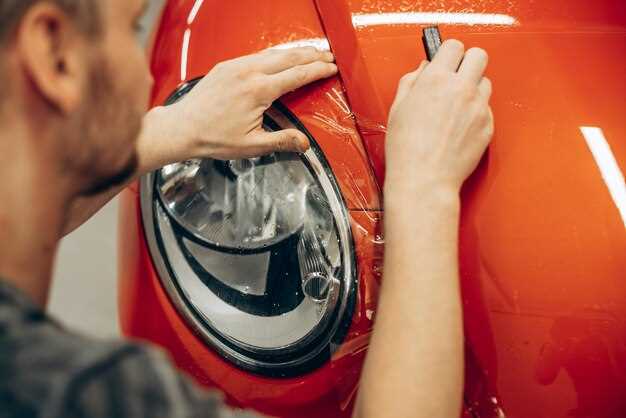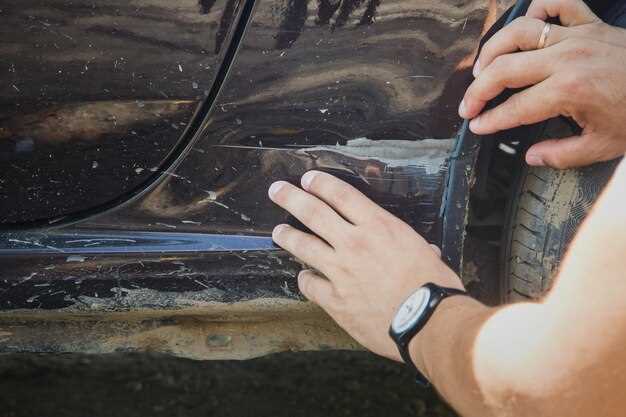
Scratches on your Ford’s paint can be a frustrating eyesore, detracting from the vehicle’s overall appearance and value. Fortunately, addressing these imperfections doesn’t always require a trip to the body shop. With the right approach and tools, you can effectively repair scratches and restore your car’s finish.
The first step in the repair process is to assess the depth and severity of the scratches. Minor scratches may only affect the clear coat, while deeper ones can penetrate through to the base paint or primer. Understanding the level of damage will guide you in selecting the appropriate repair method and materials.
Once you’ve determined the condition of the scratches, you can begin with simple techniques that often yield impressive results. For superficial marks, products like scratch-removing compounds or polishing kits can work wonders. In cases of deeper scratches, touch-up paint may be necessary to achieve a seamless finish. By following these tips, you can keep your Ford looking its best and maintain its value for years to come.
Identify the Type of Scratch on Your Ford’s Paint

Understanding the type of scratch on your Ford’s paint is essential for effective repair. Scratches can generally be categorized into three main types: surface scratches, clear coat scratches, and deep scratches.
Surface scratches are the most common. These scratches only affect the uppermost layer of paint and typically do not penetrate the clear coat. They can often be repaired using a polish or scratch remover that helps restore shine and minimize the visibility of the damage.
Clear coat scratches are slightly more severe. These scratches reach into the clear coat layer but do not go further. Repairing these scratches usually involves the use of a clear coat pen or touch-up paint, which can fill in the damaged area and restore your Ford’s exterior to its original finish.
Deep scratches are the most challenging and alarming type. They penetrate through the clear coat and the paint layer, exposing the metal beneath. Repairing deep scratches often requires professional help, as it may involve sanding down the area, applying primer, and repainting to ensure a seamless finish. Understanding the depth of the scratch is crucial to determine the appropriate repair method.
By correctly identifying the type of scratch, you can choose the most effective approach to repair, ensuring your Ford maintains its aesthetic appeal and protection against the elements.
Step-by-Step Guide to Using Touch-Up Paint
Repairing scratches on your Ford’s paint requires precision and the right materials. Follow this straightforward guide to effectively use touch-up paint and restore your vehicle’s appearance.
Step 1: Gather the Necessary Materials
Before you begin, collect all required items: touch-up paint that matches your vehicle’s color code, a fine-tip applicator (often included with the paint), sandpaper (2000 grit), and a small paintbrush or cotton swab. Additionally, ensure you have cleaning materials, like soap and water, for prepping the surface.
Step 2: Clean the Affected Area
Thoroughly clean the scratched area with soap and water to remove dirt and grease. Dry it with a soft cloth. This step is crucial to ensure proper adhesion of the touch-up paint.
Step 3: Sand the Scratch
Gently sand the scratch using 2000 grit sandpaper. This will create a smoother surface for the paint to adhere to. Be careful not to sand too deep or damage the surrounding area.
Step 4: Apply the Touch-Up Paint
Using the fine-tip applicator, apply the touch-up paint directly into the scratch. Start with thin layers, allowing each coat to dry before applying additional layers. This helps to build depth and creates a more seamless repair.
Step 5: Allow to Cure
Once you have achieved the desired coverage, let the paint cure as per the manufacturer’s instructions. This may take several hours or even days, depending on the product used.
Step 6: Polish the Area
After the paint has fully cured, gently polish the repaired area with a soft cloth. This will help blend the touch-up paint with the surrounding paint and restore a consistent shine.
Step 7: Final Inspection
Examine the repaired area for any imperfections. If necessary, repeat the application process for further refinement. With patience and attention to detail, the scratches on your Ford can be effectively repaired, returning it to a pristine condition.
Best Techniques for Buffing Out Minor Scratches

Minor scratches on your Ford’s paint can detract from its overall appearance, but with the right techniques, they can be effectively buffed out. Start by rinsing the affected area with water to remove any debris; this prevents further scratching during the buffing process.
Next, select a quality automotive soap and a microfiber cloth to wash the area thoroughly. After drying, inspect the scratches closely to determine their severity. For very light scratches, a good quality car polish can be used. Apply a small amount of polish to a clean microfiber cloth and rub it gently over the scratch in a circular motion. This action helps to fill in the scratch with the polish, blending it with the surrounding paint.
If the scratches are slightly deeper, a polishing compound may be necessary. Apply a small amount of the compound onto a foam applicator pad, and gently buff the area using overlapping circular motions. Be cautious not to apply too much pressure, as this can damage the clear coat. Rinse the area with water to remove any residue and dry it again. After buffing, it’s advisable to apply a wax or sealant to protect the treated area and enhance the shine.
For those who prefer using power tools, a dual-action polisher can make the process faster and more effective. Attach a soft foam pad and apply the product to the pad before turning on the polisher. Use a low-speed setting and work in sections, allowing the tool to do the work without applying excessive pressure.
Regardless of the method chosen, always finish by wiping the area with a clean microfiber cloth and applying a layer of wax. This not only protects the paint but also restores its luster, ensuring your Ford looks its best.



